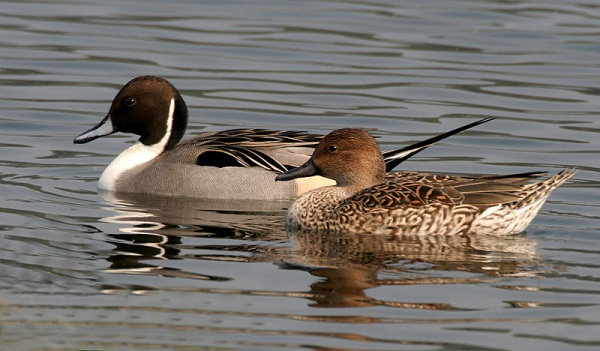Facts About Northern pintail
The Northern Pintail, commonly referred to as the pintail, is a duck species found across a wide geographic range, spanning from northern Europe and the Palearctic to North America. These ducks are migratory, wintering in regions south of their breeding grounds, extending as far as the equator.
In terms of appearance, male pintails are larger and more visually striking than females. Males feature an elongated tail and a mix of vibrant colors, while females exhibit more subdued brown plumage. Their diet primarily consists of plant material obtained by dabbling, although they do consume small invertebrates during the nesting season.
Northern Pintails prefer open wetlands for nesting and are highly social, often forming large flocks with other duck species outside of the breeding season.
Taxonomically, Carl Linnaeus first described the Northern Pintail in 1758. They belong to the genus Anas and are closely related to other pintail species. Notably, there is a related species known as Eaton's pintail, which has two subspecies but is considered distinct from the Northern Pintail.
Although Northern Pintails have a large population and an extensive range, they face threats from predators, parasites, avian diseases, and human activities such as hunting, fishing, and agriculture. Fortunately, they are not considered globally threatened.
These ducks are relatively large, with males displaying more distinctive plumage than females. They exhibit unique courtship behaviors and typically breed between April and June. Females build their nests on the ground, concealed among vegetation. Despite their numbers, they are vulnerable to predation, diseases, and habitat loss due to human activities. Even though they are one of the most numerous duck species worldwide, their populations have declined in certain regions.
Their preferred shallow water habitats are threatened by climate change, habitat loss, and hunting. Conservation efforts are in place to safeguard them, including hunting restrictions and habitat preservation initiatives. The Northern Pintail is listed as "Least Concern" on the IUCN Red List, but their population fluctuates in different areas. They are protected by conservation agreements but do not have a special status under CITES.

 Central African Republic
Central African Republic